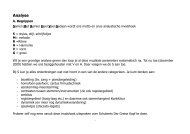Anton Webern and the influence of Heinrich Isaac
Anton Webern and the influence of Heinrich Isaac
Anton Webern and the influence of Heinrich Isaac
Create successful ePaper yourself
Turn your PDF publications into a flip-book with our unique Google optimized e-Paper software.
I’m not suggesting that <strong>the</strong>se examples were linked in <strong>Webern</strong>’s mind, but that <strong>the</strong><br />
similarities <strong>the</strong>y reveal are indicative <strong>of</strong> <strong>the</strong> osmosis <strong>of</strong> technique that seems to have<br />
occurred as a result <strong>of</strong> <strong>Webern</strong>’s studying <strong>Isaac</strong>.<br />
As its title suggests, <strong>Webern</strong>’s next work, <strong>the</strong> Five Canons Op. 16, is<br />
composed entirely using canonic techniques. It is as if he had reminded himself <strong>of</strong><br />
<strong>the</strong>ir musical possibilities with <strong>the</strong> final movement <strong>of</strong> Op. 15, <strong>and</strong> now set out to<br />
explore <strong>the</strong>m more thoroughly. Yet, to perceive any real connections between <strong>the</strong><br />
canons <strong>of</strong> Op. 16 <strong>and</strong> those <strong>of</strong> Choralis Constantinus is difficult beyond <strong>the</strong> obvious<br />
use <strong>of</strong> <strong>the</strong> technique itself. It is unsurprising, given <strong>Webern</strong>’s atonal idiom <strong>and</strong> more<br />
complex rhythmic language that his canons inhabit a different world to those <strong>of</strong> <strong>Isaac</strong>;<br />
a comparison <strong>of</strong> <strong>the</strong> two is never<strong>the</strong>less revealing.<br />
Many <strong>of</strong> <strong>the</strong> things basic to <strong>Isaac</strong>’s canonic approach are actively avoided by<br />
<strong>Webern</strong>, so as not imply any tonality. Whereas in Choralis Constantinus two <strong>and</strong><br />
three-part canons occur only at <strong>the</strong> unison, octave, fourth or fifth/twelfth, in <strong>the</strong> Five<br />
Canons <strong>the</strong>se are replaced by two-part canons at <strong>the</strong> minor ninth/second <strong>and</strong><br />
augmented fourth (movements four <strong>and</strong> two respectively), <strong>and</strong> three-part canons<br />
where <strong>the</strong> second <strong>and</strong> third imitating parts bear different interval relations to <strong>the</strong> initial<br />
dux (movements one <strong>and</strong> five). As a result <strong>the</strong> three-part canons <strong>of</strong> <strong>Webern</strong> are more<br />
complex than those <strong>of</strong> <strong>Isaac</strong>. In <strong>the</strong> first <strong>of</strong> <strong>the</strong> Five Canons for example, comes 1<br />
(Bass Clarinet) is an inversion <strong>of</strong> <strong>the</strong> dux (Clarinet) at <strong>the</strong> minor third below, while<br />
comes 2 (voice) is uninverted at <strong>the</strong> major second above. Despite this resulting in<br />
comes 2 entering at <strong>the</strong> interval <strong>of</strong> a perfect fourth above comes 1, <strong>the</strong> fact that comes<br />
1 is inverted avoids any sense <strong>of</strong> traditional tonal relationship (see Example 3). These<br />
apparently opposite harmonic approaches in fact highlight an acute sense for<br />
dissonance control common to both composers, <strong>and</strong> <strong>the</strong> fact that stylistically <strong>the</strong>y<br />
6


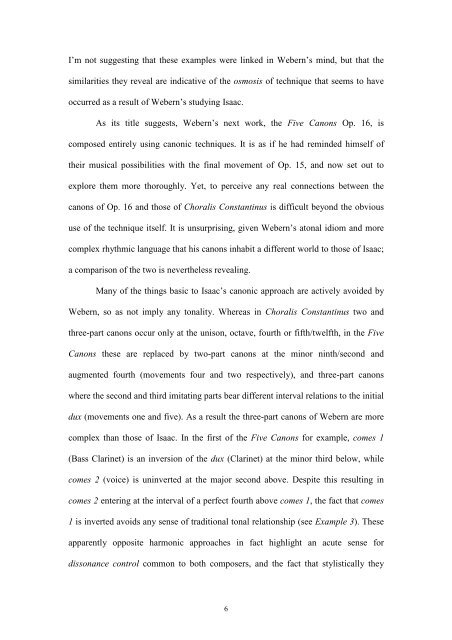
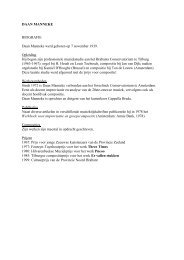
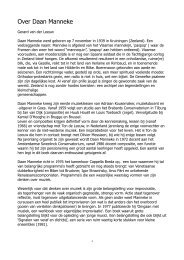
![Schubert, Winterreise: Einsamkeit [PDF] - bestmusicteacher.com](https://img.yumpu.com/21166489/1/190x135/schubert-winterreise-einsamkeit-pdf-bestmusicteachercom.jpg?quality=85)
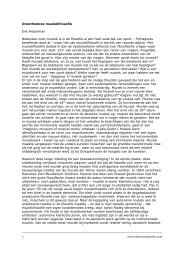
![Schubert, Winterreise: Die Nebensonnen [PDF] - Bestmusicteacher ...](https://img.yumpu.com/20295219/1/190x135/schubert-winterreise-die-nebensonnen-pdf-bestmusicteacher-.jpg?quality=85)
